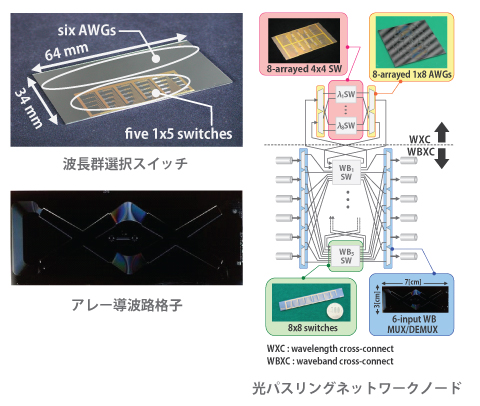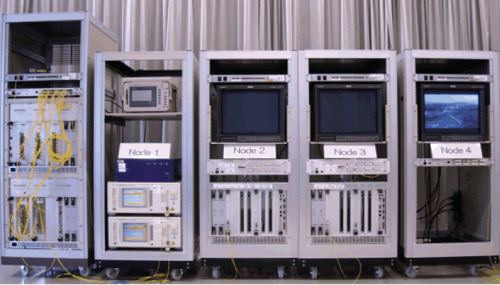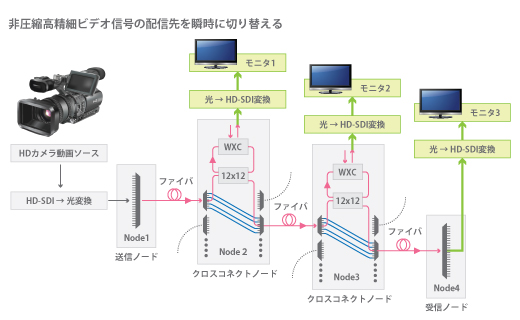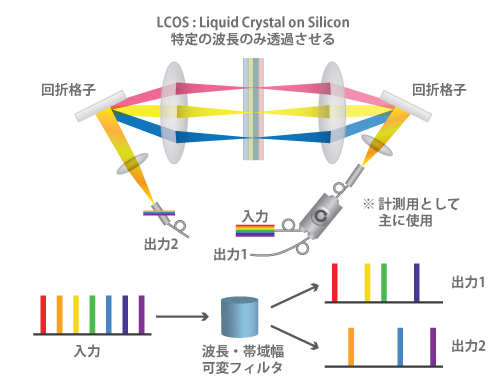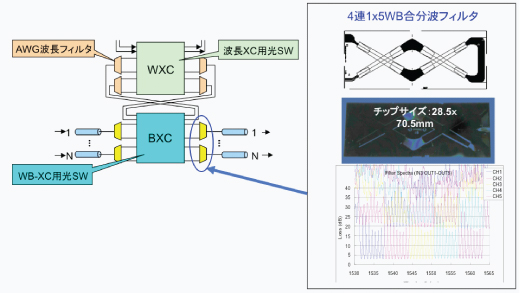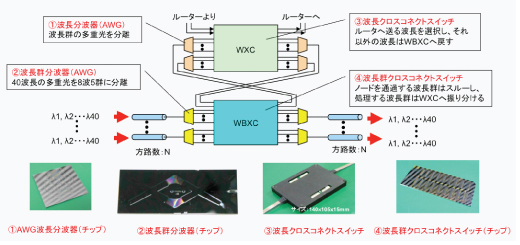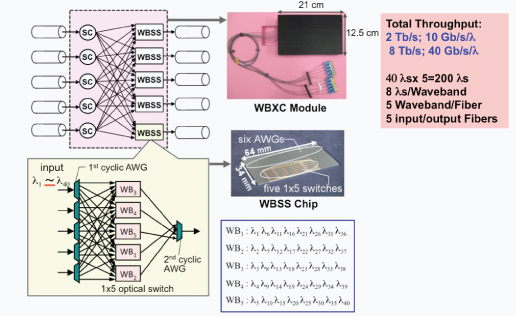Research Overview
(3) Communication Network Systems

Research Topics
Communication Network Systems
Research on Ultra-Large Scale Photonic Routing System/Node
In response to the sharp penetration of broadband access systems such as ADSL and FTTH, the amount of traffic is increasing rapidly. In response, the photonic network is being introduced to telecommunication networks; it directly routes optical signals by using “wavelength labels” so conversion into electrical signals is eliminated.
Our research aims at realizing ultra-large scale photonic network nodes that are also low cost. More concretely, we have investigated various types of photonic node configurations, and have developed new optical device modules and prototyped nodes for feasibility trials, which have been performed with collaborating companies. Through this research, we have developed various optical node systems and validated their transmission characteristics in experiments.
Multi-granular Optical Switch
Routers in the IP network first convert the input optical signals into electrical signals to realize electrical switching to the destination switch port. The electrical signals are then converted back into optical signals that are transmitted to the next node. The packet routing engines of core routers consume huge amounts of power, and the optical-electrical-optical portion is the key culprit. In order to reduce the power consumption and cost, optical cross-connect systems or ROADMs are being deployed worldwide.
Our multi-granular optical cross-connect systems have two switching parts. One is to switch signals as either waveband paths (a group of wavelength paths) or as wavelength paths. By adopting waveband, or introducing multiple switching granularity within a node, optical switch size can be reduced by half. This has been proven through the utilization of planar lightwave circuits (PLCs). In collaborative research with NTT Photonics Research Labs. and NTT Electronics, we have prototyped multi-granular cross-connect systems by using newly developed PLC devices that include a new type of wavelength multiplexer, an optical switch, and so on. Through the performance tests on the fabricated optical cross-connect systems, we realized the world’s first demonstration that the power consumption can be reduced by around 95% compared to equivalent conventional routers.
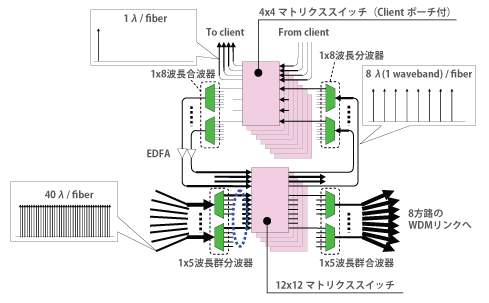
Configuration of Multi-Tier Optical Cross-Connect Systems
Large-Scale Optical Switch
In the photonic network, which directly switches optical signals by using “wavelength labels”, one of the key technologies is Wavelength Division Multiplexing (WDM). In a WDM system, different wavelengths are multiplexed within a single fiber. In order to cope with the future increase in communication traffic, larger capacity should be provided by increasing the number of wavelengths within a single fiber and the number of fibers in a cable as well. However, the current optical switch size cannot support large numbers of wavelengths and fibers.
Our large-scale optical switch research has been investigating a new approach to large-scale optical switch configuration, which was previously considered to be very difficult to attain cost effectively. To this end, we have been developing and experimentally evaluating several key optical devices with collaborating companies.
Tunable Optical Filter
The high-cost of optical devices used in optical transmission equipment is one of the serious bottlenecks preventing the wider deployment of photonic networks.
Through research, we have clarified that the optical node can be configured by using simple tunable optical filters, with great reductions possible if the WSS (Wavelength Selective Switch) is used as it offers high-performance a relatively low cost. As a result, a low-cost optical node can be realized. Recently we have developed tunable optical filters using various technologies. One is to use LCOS (Liquid Crystal on Silicon), where a LCOS has two outputs, each of which passes the specified wavelengths or the blocked remaining wavelengths (see Fig. 1). Since the LCOS is being widely used in projectors or optical measurement equipment, low cost can be expected compared to WSS.
